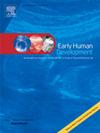优化产前皮质类固醇治疗:精准医学时代的利益与风险平衡。
IF 2
3区 医学
Q2 OBSTETRICS & GYNECOLOGY
引用次数: 0
摘要
产前皮质类固醇(ACS)治疗是现代围产期护理的基石,仍然是降低与早产相关的新生儿发病率和死亡率的有效干预措施。然而,新出现的证据强调需要一种更精细的方法来使用ACS,特别是随着当代ACS治疗合格人群的扩大。对于暴露于ACS治疗的几个亚群,包括多胎妊娠、宫内生长受限和绒毛膜羊膜炎,存在相对较小的证据池。本综述综合了ACS的药代动力学、疗效和安全性方面的现有证据,特别关注剂量优化、长期结局和胎儿治疗反应的可变性。我们研究了开发工具来评估胎儿肺成熟的潜力,从而评估从ACS治疗中获益最多的妊娠。此外,我们试图解决有关ACS过度暴露和对非肺胎儿系统的意外影响的新问题。这篇综述强调了关键的知识差距,特别是在长期神经发育结果、最佳给药策略和个性化风险预测工具方面。发展基于精确的ACS治疗方法对于确保在使用这种干预的不同临床环境中获得最大的益处和最小的危害至关重要。本文章由计算机程序翻译,如有差异,请以英文原文为准。
Optimizing antenatal corticosteroid therapy: Balancing benefit and risk in the era of precision medicine
Antenatal corticosteroid (ACS) therapy is a cornerstone of modern perinatal care and remains an effective intervention for reducing neonatal morbidity and mortality associated with preterm birth. However, emerging evidence highlights the need for a more refined approach to ACS use, especially with contemporary expansion of the ACS therapy eligible population. A relatively small pool of evidence exists for several sub-populations exposed to ACS therapy, including multiple pregnancies, intrauterine growth restriction and in the setting of chorioamnionitis. This review synthesized current evidence on the pharmacokinetics, efficacy, and safety of ACS, with particular focus on dose optimization, long-term outcomes, and variability in fetal treatment response. We examined the potential of developing tools to assess fetal lung maturation and thus pregnancies that would most benefit from ACS therapy. Additionally, we sought to address emerging concerns regarding ACS overexposure and unintended effects on non-pulmonary fetal systems. The review highlights key knowledge gaps, particularly in relation to long-term neurodevelopmental outcomes, optimal dosing strategies, and tools for individualized risk prediction. Development of precision-based approaches to ACS therapy is essential to ensure maximal benefit and minimal harm across varied clinical contexts in which this intervention is used.
求助全文
通过发布文献求助,成功后即可免费获取论文全文。
去求助
来源期刊

Early human development
医学-妇产科学
CiteScore
4.40
自引率
4.00%
发文量
100
审稿时长
46 days
期刊介绍:
Established as an authoritative, highly cited voice on early human development, Early Human Development provides a unique opportunity for researchers and clinicians to bridge the communication gap between disciplines. Creating a forum for the productive exchange of ideas concerning early human growth and development, the journal publishes original research and clinical papers with particular emphasis on the continuum between fetal life and the perinatal period; aspects of postnatal growth influenced by early events; and the safeguarding of the quality of human survival.
The first comprehensive and interdisciplinary journal in this area of growing importance, Early Human Development offers pertinent contributions to the following subject areas:
Fetology; perinatology; pediatrics; growth and development; obstetrics; reproduction and fertility; epidemiology; behavioural sciences; nutrition and metabolism; teratology; neurology; brain biology; developmental psychology and screening.
 求助内容:
求助内容: 应助结果提醒方式:
应助结果提醒方式:


